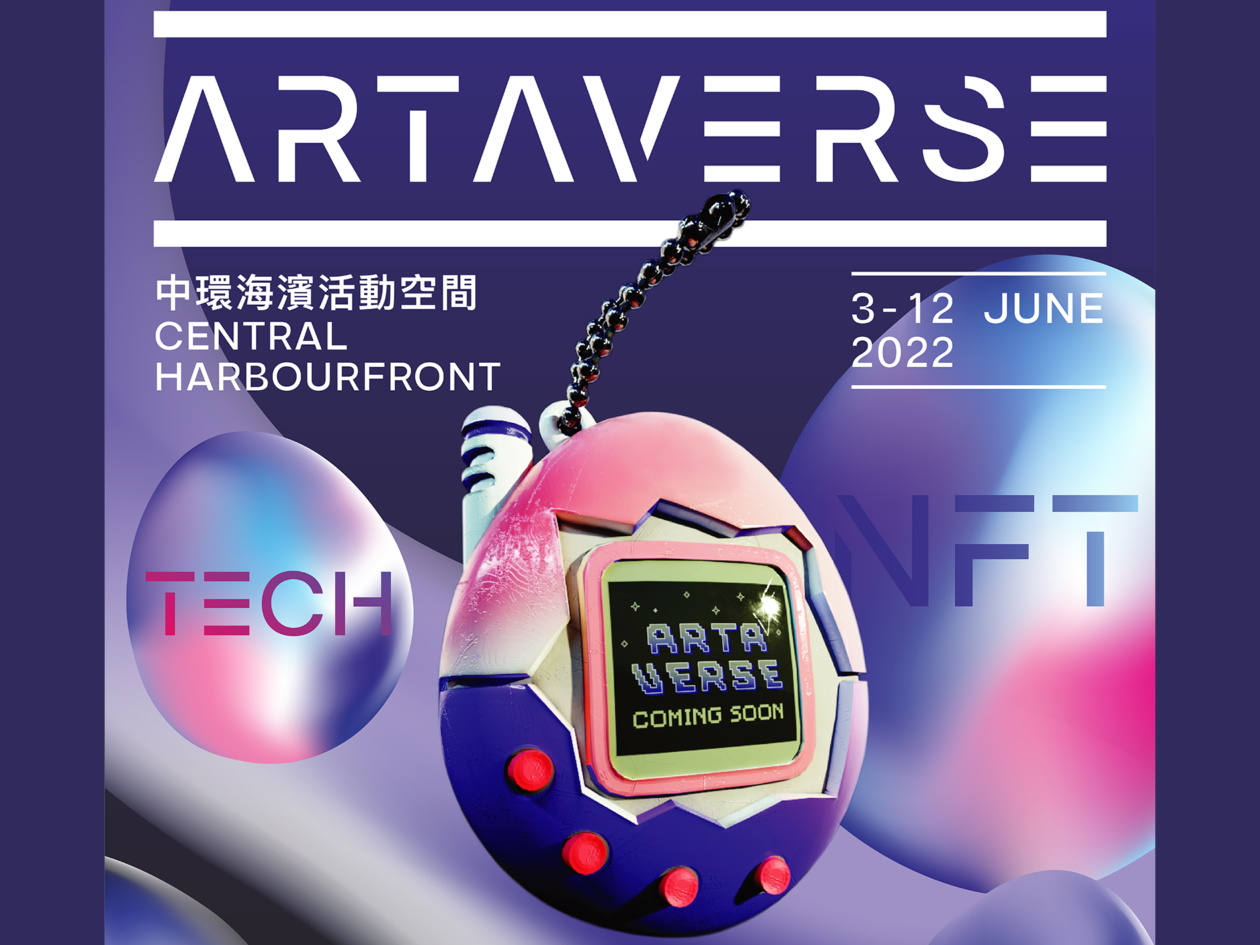In a series of tent-like structures beneath a massive white canopy lies Hong Kong’s most ambitious attempt to make itself relevant again to the global arts community.
Artaverse, the city’s brand new non-fungible token (NFT) art exhibition on its iconic Central Harbourfront, seeks to connect cutting-edge technology with global art in the context of Web 3.0 and the metaverse. On display are profile-picture NFT art collections, pop art, street art and experimental installation arts.
“We aim to provide artists with more platforms to promote their artworks,” said Daniel Chang, chief marketing officer of Artaverse.
The exhibition, along with other events such as Art Basel and Art Central, comes as the once-global city grapples with one of the world’s lengthiest quarantine requirements even as the world has moved on and learnt to live with the Covid-19 pandemic.
A political clampdown by China following the 2019 protests as well as a weeklong quarantine policy have driven many internationally-minded people out of the city. Hong Kong’s population at the end of last year declined to 7.4 million, a 1.6% decline from a year earlier, government estimates showed.
See related article: Hong Kong retail, art hub rolls out the carpet for NFTs. What would Bruce Lee think?
Events such as Artaverse help Hong Kong’s authorities show that the city’s vibrant ethos is still intact, especially when it comes to art. The city was known in art circles to regularly notch records when it came to the sale of art pieces, drawing marquee artists and galleries from around the world.
China accounts for more than a third of global art sales, and buying the art in Hong Kong helps mainlanders avoid high taxes back home. The art may then be shipped to be stored in private galleries from Geneva to London.
In 2021, Jean-Michel Basquiat’s “Warrior” painting was sold for US$41.8 million at a livestreamed Christie’s auction in Hong Kong, becoming the most expensive Western work of art ever sold in Asia, according to the auctioneer.
In 2018, Zao Wou-ki’s Juin-Octobre 1985 was sold for US$65 million, breaking the record for the most valuable painting sold in Hong Kong auctions, as well as the world auction record for an oil painting by an Asian artist.
See related article: Tezos, generative NFTs take spotlight at Art Basel, Hong Kong
With the growing local anticipation of NFTs and the metaverse, the exhibition witnessed the participation of more than 100 partners including Animoca Brands, MetaMask and L2 Capital.
“[NFTs] refreshed [the artists] in a way that I can bounce from a physical to a digital,” street artist Szabotage told Forkast in an interview. “And that for me is ultimately the best place to be because one gives me total inspiration and freedom and the other one sort of helps me tune it a lot more,” he said.
“There are a lot of questions, but there’s also a lot of hope among the creative community, because digital art was very hard to sell in the past,” said Kaho Yu, an independent digital artist who visited the exhibition.
The displays of digital NFT art helps showcase a wide variety of artists who may otherwise struggle to land a gallery to showcase their work and find a buyer.
See related article: Hong Kong exhibition to showcase NFTs for good causes
“Through the NFT, we can learn about the art world, not only in the museum, not only as an expensive industry, but [that] everybody can connect with art,” said Sally Chu, CEO of Oneness Art Platform.
While local contemporary art was the centerpiece of this year’s Artaverse, Angus Lo, chief executive officer (CEO) of CoinUnited, Asia’s largest NFT collector, says he expects the marriage of NFT and art to help extend geographic boundaries.
“Basically on the NFT, there [will be] no boundaries,” Lo told Forkast. “When you put the NFT on the platform, it’s all international,” he said. “There are no boundaries.”

